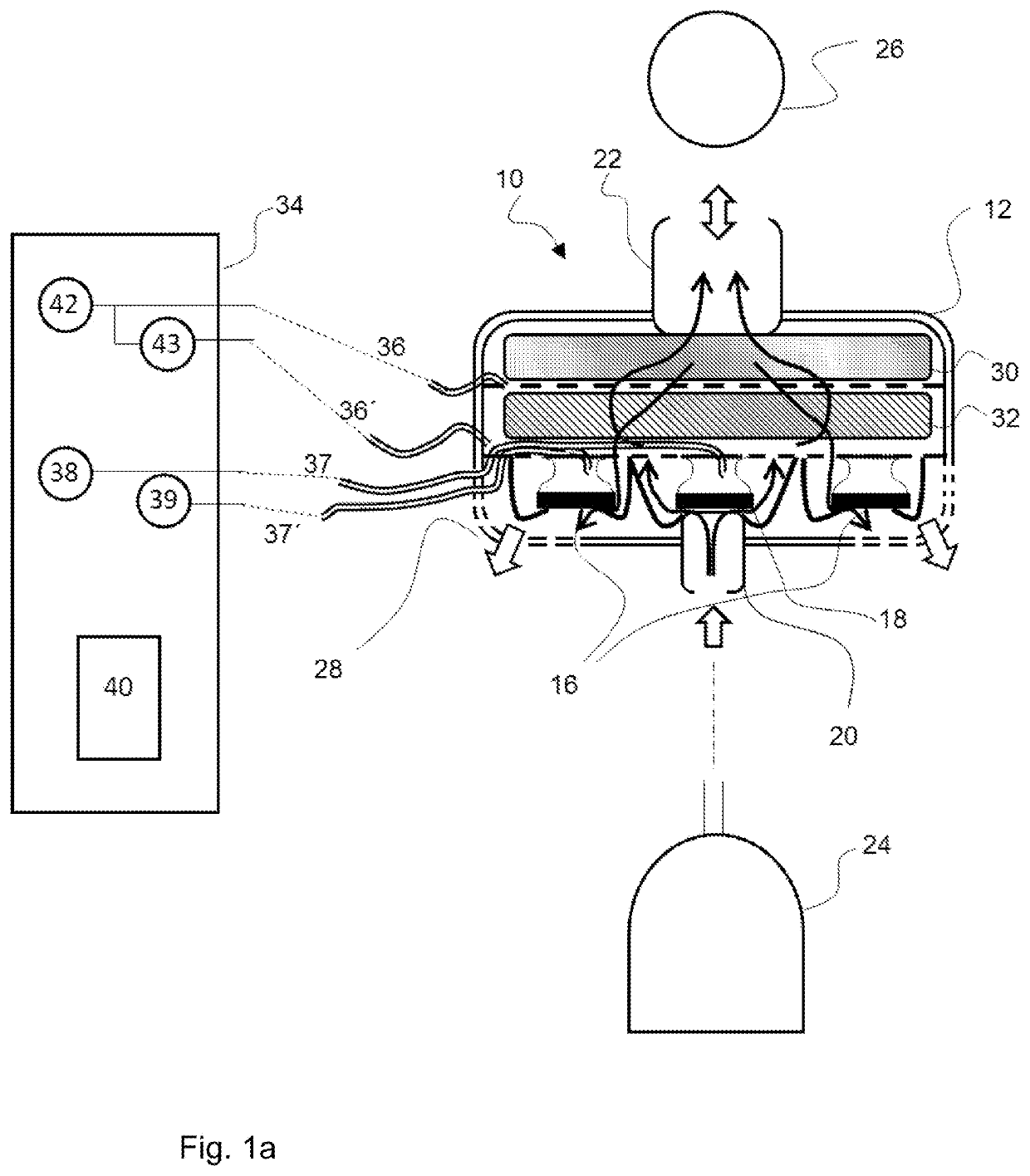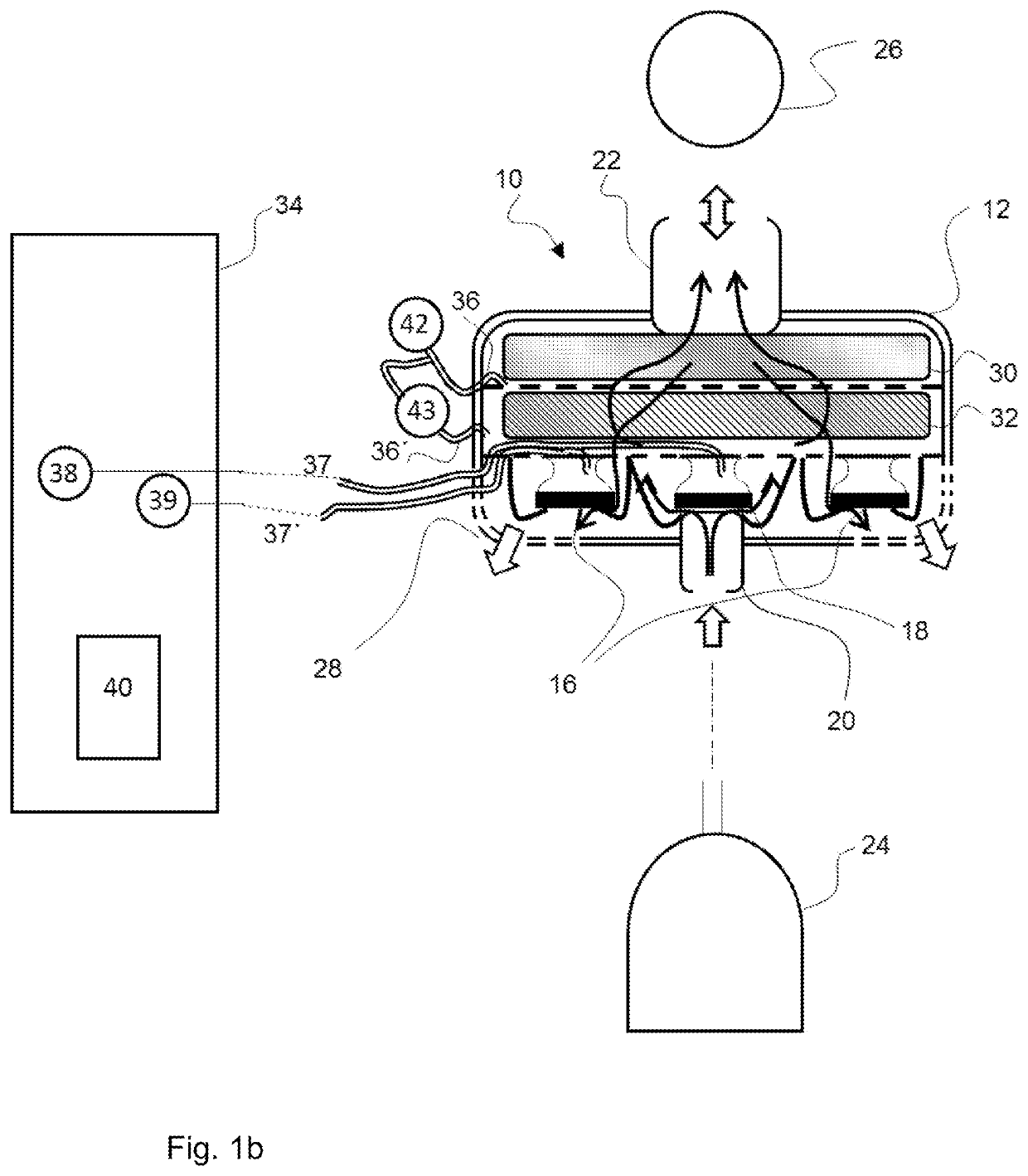Device for ventilating a patient and process for the operation of the device
a technology for ventilating devices and patients, which is applied in the field of ventilating devices for patients and the operation of the device, can solve the problems of increasing the construction volume, microorganisms or the like carried by the exhaled breathing gas, and not reaching the dry area in the interior of the patient module, so as to maintain the operability of the sensor mechanism and not affect the fluid conductivity of the devi
- Summary
- Abstract
- Description
- Claims
- Application Information
AI Technical Summary
Benefits of technology
Problems solved by technology
Method used
Image
Examples
Embodiment Construction
[0085]Referring to the drawings, the views in FIGS. 1a through 1e show individual embodiments of the device for ventilating a patient being proposed here as examples. Such a device is designated here and below as a patient module 10. The patient module 10 comprises a housing 12 and a valve section 14 (a section with at least one valve 16, 18) in the interior of the housing. The patient module 10 is shown in each case in a sectional view, so that the view of the interior of the housing 12 is free. The valve section 14 comprises at least one exhalation valve 16. In the embodiments being shown, the patient module 10 comprises two or more exhalation valves 16, and precisely two exhalation valves 16 can be seen in the viewing direction selected for the views in FIGS. 1a through 1e. In addition to the at least one exhalation valve 16, the patient module 10 comprises an (in principle, optional) inhalation valve 18 in the embodiments shown. The view of the valves 16, 18 is highly simplified...
PUM
 Login to View More
Login to View More Abstract
Description
Claims
Application Information
 Login to View More
Login to View More - R&D
- Intellectual Property
- Life Sciences
- Materials
- Tech Scout
- Unparalleled Data Quality
- Higher Quality Content
- 60% Fewer Hallucinations
Browse by: Latest US Patents, China's latest patents, Technical Efficacy Thesaurus, Application Domain, Technology Topic, Popular Technical Reports.
© 2025 PatSnap. All rights reserved.Legal|Privacy policy|Modern Slavery Act Transparency Statement|Sitemap|About US| Contact US: help@patsnap.com



